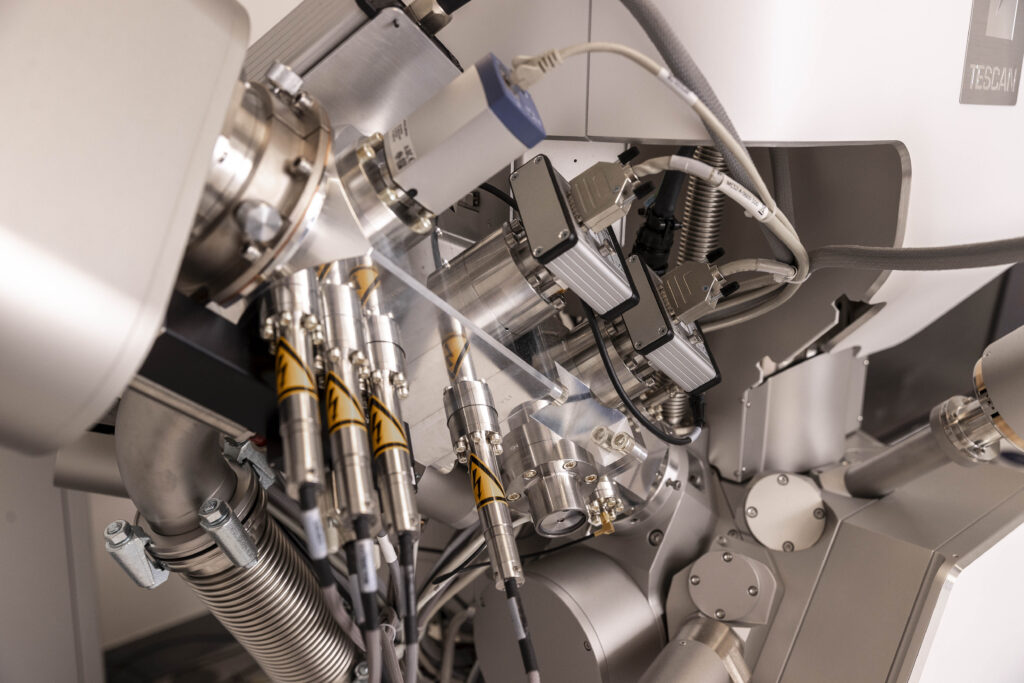
CS-3978 Core Research Facilities Shoot 1 (J03), microscopy, Dr David Martinez Martin, Sydney Microscopy & Microanalysis
A new state-of-the-art microscopy and microanalysis facility has officially opened at the University of Sydney, enhancing the institution’s capacity for interdisciplinary research. Located in the Engineering and Technology Precinct, the facility aims to provide advanced tools that support groundbreaking work across engineering, science, and biomedicine.
The Sydney Microscopy and Microanalysis node features cutting-edge instruments, including Atomic Force Microscopes tailored for biomedical and materials science applications, an advanced analytical Scanning Electron Microscope, and a High Resolution Plasma Focused Ion Beam (FIB) system. Significantly, many of these instruments are the first of their kind in Australia. This launch represents a major step forward in the University’s Core Research Facilities, providing researchers with unprecedented capabilities to investigate biological and material samples.
A strategic partnership with Bruker, a leading manufacturer of analytical instruments, has been pivotal in developing these new capabilities. The facility is intended to facilitate high-impact research in crucial areas such as nanomedicine, biomedical engineering, and renewable technologies. Researchers will now be able to explore complex samples at remarkable resolutions, paving the way for advances in early disease detection and precision manufacturing.
Supporting National and Global Research Collaboration
The facility operates under Microscopy Australia’s open access policy, allowing researchers from across Australia and globally to apply for equipment usage. This accessibility reinforces the University of Sydney’s role as a collaborative research hub, fostering partnerships between academia and industry. Researchers from multiple faculties, including Engineering, Science, and Medicine and Health, have already expressed interest in utilizing the new facilities.
Dr. David Martinez Martin, Deputy Director of Sydney Microscopy and Microanalysis, is among the first researchers set to benefit from the new capabilities. He has played a crucial role in advancing atomic force microscopy technologies and has collaborated with Bruker for over a decade to push the boundaries of this field. Dr. Martinez Martin emphasized the collaborative effort involved in bringing this facility to fruition, stating, “These achievements have been made possible through a collaborative effort, with key contributions from colleagues across the University.”
His research focuses on cell mass dynamics, using an innovative technology called the inertial picobalance. This commercial tool allows for real-time tracking of live cell mass changes, offering insights into processes linked to various health disorders. The new capabilities provided by the facility will further enhance his research into cell mass regulation and its implications in fields such as cancer and obesity.
Driving Innovation in Health and Materials Science
The facility is expected to significantly accelerate research outcomes with practical applications in health, manufacturing, and sustainability. Other prominent users include laboratories led by Professor Tony Weiss, who is developing new biomaterials to enhance patient healing, and Associate Professor Markus Müllner, focused on creating injectable gels for targeted medication delivery.
Professor Simon Ringer, Pro-Vice-Chancellor for Research Infrastructure, highlighted the importance of the facility, stating, “This new facility is testament to the University’s commitment to investing in world-class infrastructure that empowers researchers to tackle complex challenges for the public good.” He noted that the Australian-first instruments will lead to discoveries benefiting both the Australian community and the global research landscape.
Professor Julie Cairney, Interim Deputy Vice-Chancellor for Research, added that partnerships with industry leaders like Bruker ensure researchers have access to leading-edge tools. The launch event featured a keynote address by Professor Toshio Ando from Kanazawa University, a renowned expert in High-Speed Atomic Force Microscopy, who discussed the new opportunities the facility will create for researchers.
The official opening of the Sydney Microscopy and Microanalysis node marks a significant milestone for the University of Sydney, reinforcing its position as a leader in research excellence and innovation on both national and international stages.







